What became of the flags Apollo astronauts left on the moon?
- Oops!Something went wrong.Please try again later.
- Oops!Something went wrong.Please try again later.
When you buy through links on our articles, Future and its syndication partners may earn a commission.
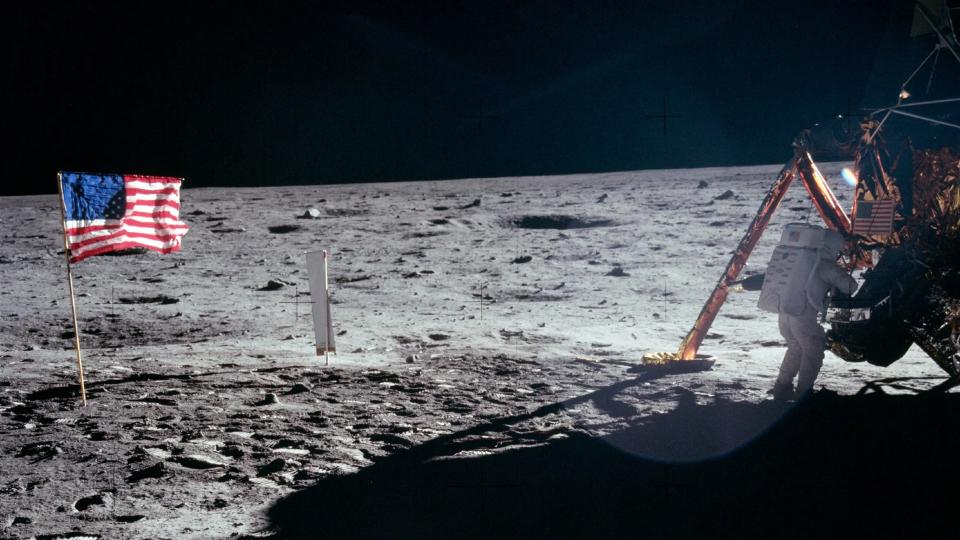
55 years ago today, Apollo 11's flag raising on the ancient lunar surface took all of 10 minutes during Neil Armstrong's and Buzz Aldrin's two-and-a-half hour moonwalking adventure in July 1969.
But that seminal event in vexillological history was not without a lot of debate, discussion and early worries that were run up the policy flagpole about "who owns the moon?" (Vexillology is the study of the history, symbolism and usage of flags.)
Matthew Ward is a senior lecturer in history at the University of Dundee in Scotland. He notes that the American flag is distinctively powerful and seems to be present in the imagery of almost every key event in American history, from Apollo moon landings to firefighters raising the flag over the ruins of the World Trade Center on 9/11 in 2001. "It is difficult to think of any other flag that's so heavily invested in meaning. The Stars and Stripes expresses the spirit, history and identity of an entire nation," Ward points out.
Symbolic activity
In the early 1990s, Anne Platoff, then working with Hernandez Engineering Inc. in Houston, Texas put together a NASA contractor report titled, "Where No Flag Has Gone Before: Political and Technical Aspects of Placing a Flag on the Moon."
Platoff explains that Apollo 11's flag-raising on the moon was strictly a symbolic activity. Given that the United States was a signatory to the United Nations Treaty on Outer Space, inking that treaty precluded any territorial claim to the moon.
"Nevertheless, there were domestic and international debates over the appropriateness of the event," Platoff explains. Congress amended NASA's appropriations bill to prevent the space agency from unfurling flags of other nations, or those of international associations on the moon during missions funded solely by the United States.
Platoff notes in her report that the legal status of the moon clearly would not be affected by the presence of a U.S. flag on the lunar surface, "but NASA was aware of the international controversy that might occur as a result."
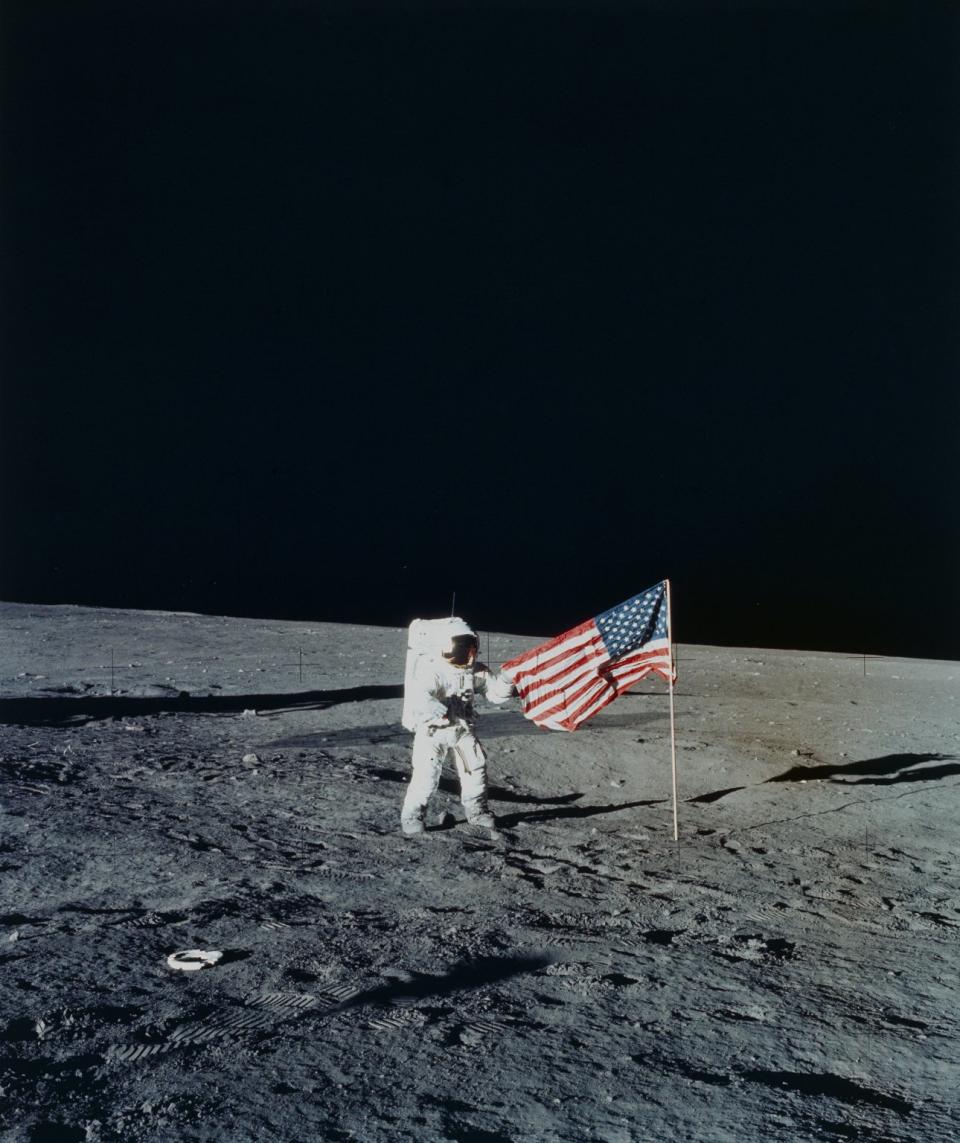
Flagpole design
In Platoff's report, she points out that the Apollo flag-raising also gave NASA engineers technical challenges.
"They designed a flagpole with a horizontal bar allowing the flag to 'fly' without the benefit of wind to overcome the effects of the moon's lack of an atmosphere. Other factors considered in the design were weight, heat resistance, and ease of assembly by astronauts whose space suits restricted their range of movement and ability to grasp items," Platoff explains.
Apollo 11's Buzz Aldrin later recounted in an article written for Life magazine that as he looked at the flag, the moonwalker sensed an "almost mystical unification of all people in the world at that moment."
Aldrin also described what it was like when he and Armstrong were able to put up the flag, a pennant that was purchased locally in Houston for $5.50.
"Just beneath the powdery surface, the subsoil was very dense," Aldrin recalled. "We succeeded in pushing the flagpole in only a couple of inches. It didn't look very sturdy."
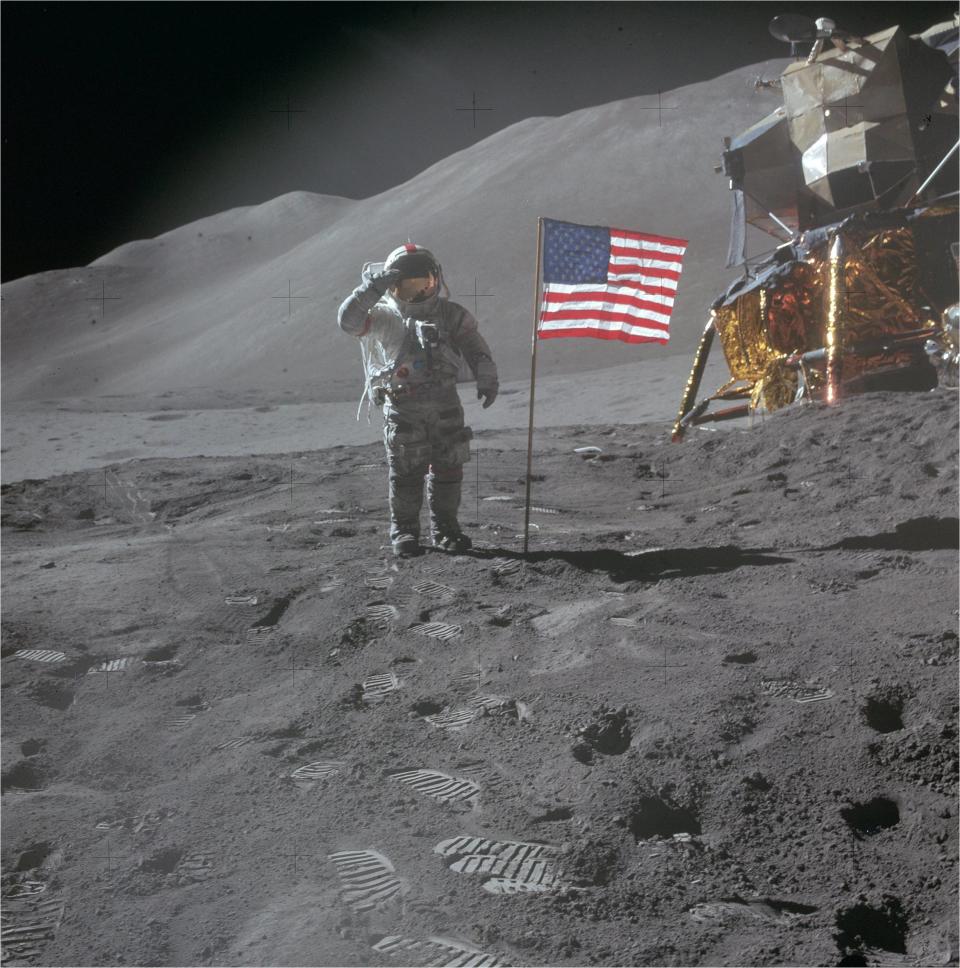
Sun rot
In carrying out her research, Platoff found that the six flags placed on the moon by Apollo moonwalkers were not all the same size.
Furthermore, the Apollo 17 flag planted in December 1972, the program's last moon mission, was uniquely noteworthy; that flag had been displayed in the Mission Operations Control Room during the other Apollo missions, and then emplaced on the moon by the last moonwalking crew, Eugene Cernan and Jack Schmitt.
What's not known is the condition of those flags today. Even if the flags have remained standing when crews rocketed off the moon, it is almost certain that they are not in the same condition as when they were first deployed on the lunar surface. "Most likely the nylon of the flag has degraded as the result of prolonged exposure to sunlight," Platoff senses, a destructive outcome that's tagged "sun rot."
The lunar flags are likely to have become brittle and may have disintegrated over time. Yet another damaging threat to the lunar flags is bombardment by moon-mean meteoroid impacts, Platoff concludes.
Platoff is now a librarian, historian and vexillologist at the University of California, Santa Barbara.
"One thing that I keep seeing in articles is that the flags would be bleached white from exposure to sunlight. While this does happen to some flags on Earth, I am not sure about the chemical process involved and if that would occur in a lunar environment," Platoff tells Space.com.
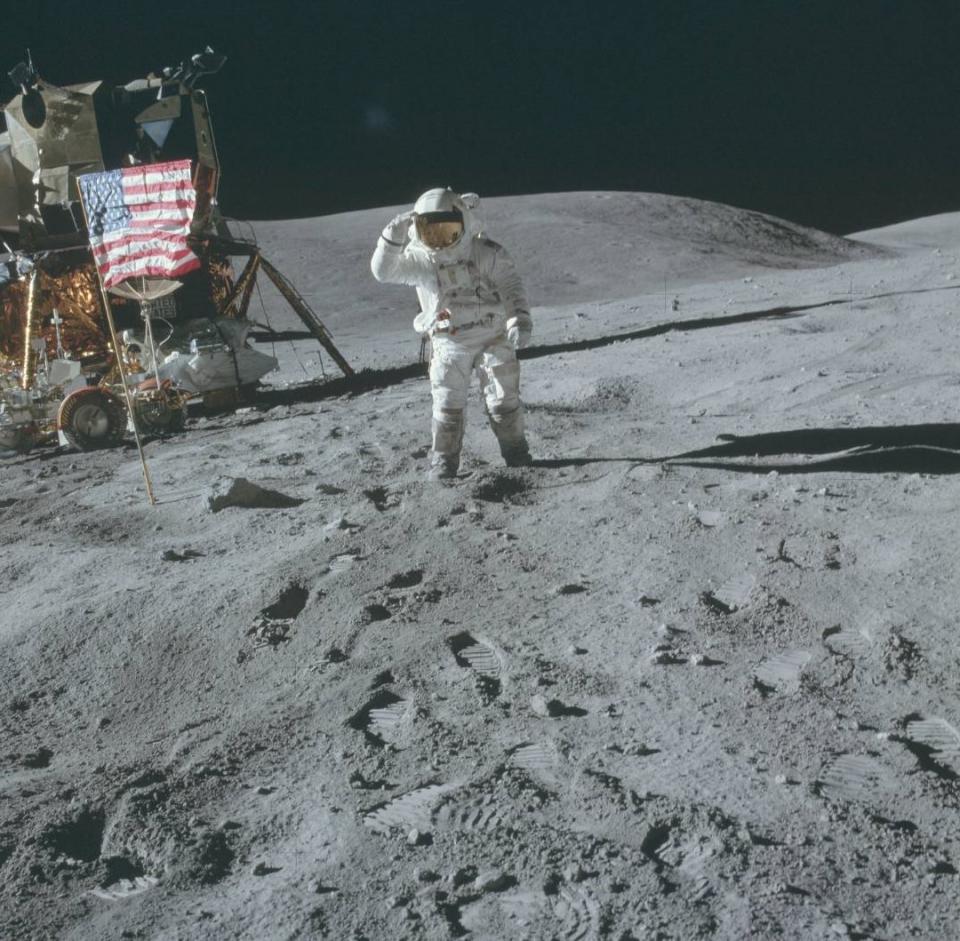
Wanted: critical thinking
As Platoff writes in her 2011 research paper, "Six Flags over Luna: The Role of Flags in Moon Landing Conspiracy Theories," whether the flags have remained standing or have endured decades of exposure to the harsh lunar environment, "their legacy as a symbol of the human exploration of space remains intact."
Clearly, the significance of these images, said Platoff, "will endure long after the deaths of those who participated in this historic undertaking."
As for those backing the conspiratorial faking of Apollo moon landings, Platoff is adamant about the matter.
"Refuting the moon landing hoax conspiracies is not difficult to do," Platoff explained to Space.com. "There is plenty of evidence out there to prove that the Apollo landings were real and that human beings have walked on the lunar surface."
The real problem, Platoff adds, is that there's a need to teach people to be critical thinkers.
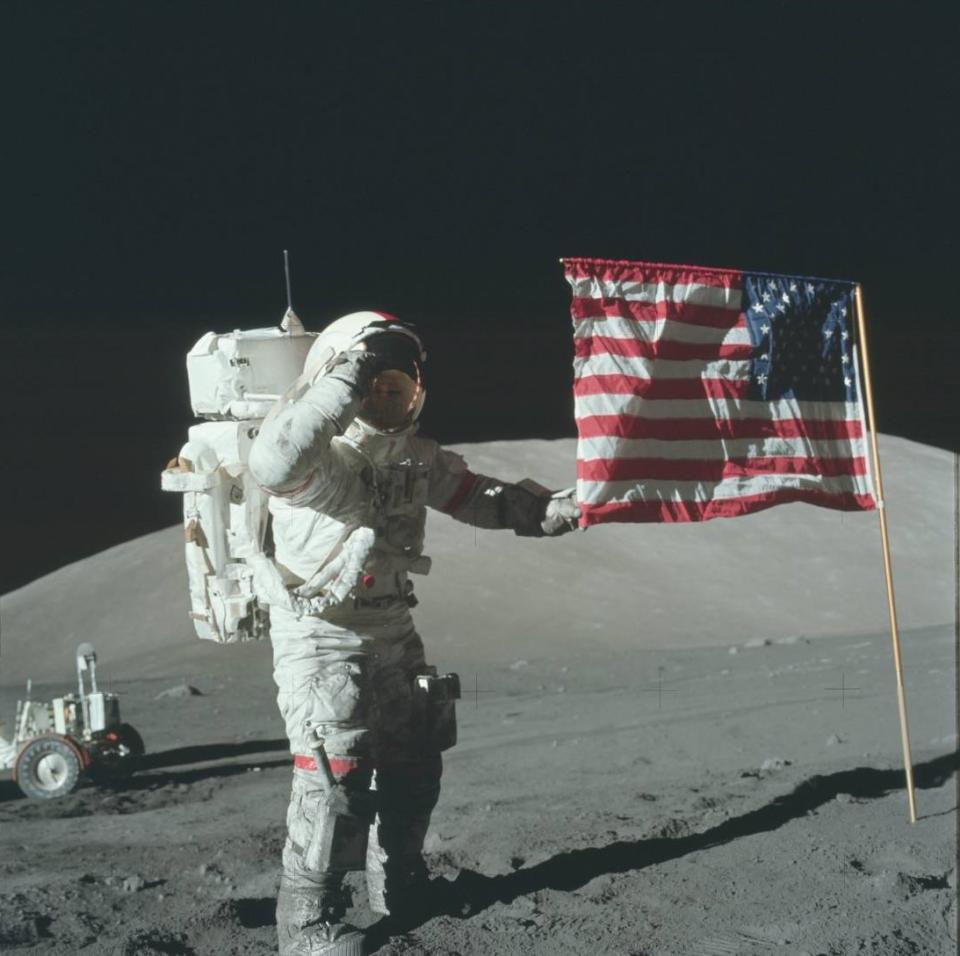
RELATED STORIES:
— Apollo Moon Landing Flags Still Standing, Photos Reveal
— On the Moon, Flags & Footprints of Apollo Astronauts Won't Last Forever
— Apollo Astronaut's US Flag Secretly Carried on the Moon Heads to Auction
"Do you really think it would be possible to maintain the level of cooperation from everyone involved in the Apollo Program to maintain the hoax for fifty-five years? Or is it more plausible that people working together were able to harness the power of science and technology to achieve the goal of landing astronauts on the moon and bringing them home safely?"
People who deny that the Apollo moon landings occurred, Platoff concludes, "are free to believe what they want, but that doesn't make them right."

